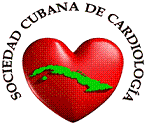Reduction of the "door-needle" time at the Emergency Departament with the thrombolytic treatment
Keywords:
THROMBOLYTIC THERAPY, MYOCARDIAL INFARCTION.Abstract
110 patients were treated with recombinant streptochinase by the medical tem on duty at the Institute of Cardiology and Cardiovascular Surgery aimed at reducing the «door-needle» time. The time elapsed from the onset of the symptons until the arrival of the patient to the Emergency Departament was 110 min (between 10 and 420 min). It took 53 min to carry out thrombolysis (from 15 to 180 min). The langh of time since the onset of the symptons until the beginning of the treatment was 165 min (between 30 and 440 min). After concluding the thrombolytic treatment patients were divided into 2 groups. In the group in which the S-T segment becams normal the average length of time from the onset of the symptoms to the beginning of the treatment was 135.7 min, whereas in the other group where the S-T segment was not normal the mean was 194.7 min. There was a significant difference (p < 0.001). It was concluded that thrombolysis at the Emergency Departament reduces the «door-needle» time remarkably and increases the possibility of success ot the treatment.Downloads
Downloads
Published
How to Cite
Issue
Section
License
Aquellos autores/as que tengan publicaciones con esta revista, aceptan los términos siguientes:- Los autores/as conservarán sus derechos de autor y garantizarán a la revista el derecho de primera publicación de su obra, el cuál estará simultáneamente sujeto a la Attribution-NonCommercial 4.0 Internacional (CC BY-NC 4.0) que permite a terceros compartir la obra siempre que se indique su autor y su primera publicación esta revista. o admite fines comerciales. Permite copiar, distribuir e incluir el artículo en un trabajo colectivo (por ejemplo, una antología), siempre y cuando no exista una finalidad comercial, no se altere ni modifique el artículo y se cite apropiadamente el trabajo original. El Comité Editorial se reserva el derecho de introducir modificaciones de estilo y/o acotar los textos que lo precisen, comprometiéndose a respectar el contenido original.
- Los autores/as podrán adoptar otros acuerdos de licencia no exclusiva de distribución de la versión de la obra publicada (p. ej.: depositarla en un archivo telemático institucional o publicarla en un volumen monográfico) siempre que se indique la publicación inicial en esta revista.
- Se permite y recomienda a los autores/as difundir su obra a través de Internet (p. ej.: en archivos telemáticos institucionales o en su página web) antes y durante el proceso de envío, lo cual puede producir intercambios interesantes y aumentar las citas de la obra publicada. (Véase El efecto del acceso abierto).









